Workplace Harassment Lawyer in NYC
Every employee deserves to work in an environment without having to worry about uncontrollable parts of their identity. Whether it is their racial, ethnic, or gender identity, these factors should not be bases for hostility when they clock in for work.
Should you experience or witness injustices based on these factors, you may have a valid harassment claim. Discover what workplace harassment is all and what you can do should you ever encounter it.
General Information: What Is Workplace Harassment?
Harassment in the workplace is a form of employment discrimination.
It is a violation of a handful of laws, including:
- Title VII of the Civil Rights Act of 1964
- The Age Discrimination in Employment Act of 1967 (ADEA)
- The Americans with Disabilities Act of 1990 (ADA)
Workplace harassment becomes unlawful when:
- You endure the offensive conduct regularly as you work.
- You determine your employer’s or co-worker’s conduct to be intimidating, hostile, or abusive.
As such, annoyances or petty slights may not constitute workplace harassment, especially if the actions were part of isolated incidents. Still, discriminatory behaviors can quietly rise to an illegal level without your knowledge. Be sure to know your rights as a worker when it comes to discrimination.
What Laws Govern Harassment in the Workplace?
The Civil Rights Act of 1964 protects workers’ rights against harassment. This law criminalizes employers who discriminate against employees based on their racial identity, skin color, religious beliefs, sexual orientation, or national origin.
Despite this law’s existence, a 2019 Statista report mentioned how three out of five employees working in the United States have witnessed or experienced discrimination as defined in the 1964 Civil Rights Act.
The Equal Employment Opportunity Commission (EEOC) outlines regulations to ensure employees have the right to work in a hostile-free environment.
However, co-workers may contribute to the creation of a hostile work environment, even if the employer themselves do not condone discriminatory actions. Regardless of their views, the employer is responsible for the created environment.
You have the right to protect yourself or colleagues against discriminatory actions should you witness or experience them first-hand. In such cases, consider seeking legal representation from licensed workplace harassment lawyers.
What Are Examples of Workplace Harassment?
You may unknowingly be a victim especially if you don’t pay too much attention to your supervisor’s or colleagues’ actions toward you. Likewise, a co-worker may fail to notice when they are the target of workplace harassment. Some conduct that may constitute discrimination include:
Offensive Jokes: Did your immediate supervisor or manager express inappropriate humor that left you feeling uncomfortable? Did they attempt to brush it off by claiming “it was just a joke”?
Epithets: Does your co-worker call you by a nonconsensual nickname?
Assaults: Are you often the target of verbal or physical abuse despite performing the tasks expected of you?
– It can take many forms, including verbal or physical threats, unwanted touching, pushing or shoving, or any other form of unwanted contact. If you are the target of assault in the workplace, it is important to document the incident and seek legal help.
Threats: Does your supervisor or managerial employee destroy your property or make violent gestures, like shaking their fists?
– Threats of physical harm, destruction of property, or other forms of intimidation can create an intimidating, hostile work environment and should not be tolerated. This is considered psychological harassment.
Intimidation: Are your co-workers blackmailing you or resorting to violence to get you to do something?Intimidation in the workplace is a serious problem that can have a major impact on both employees and employers. Intimidation can take many forms, including physical violence, verbal threats, blackmailing or other forms of coercion.
Ridicule: Do you have colleagues who continuously mock you for dressing or presenting a certain way?
– Ridicule in the workplace can be incredibly damaging to one’s mental and emotional health. It can cause a person to feel ashamed, embarrassed, and even humiliated. If you have colleagues who continuously mock you for dressing or presenting a certain way, it is considered harassment and you may be able to seek legal action.
Insults: Did an officemate make a rude or disrespectful comment about you or something you did?
– Insults in the workplace are one of the forms of harassment if they are based on characteristics protected by law, such as race, gender, age, or disability. If someone has made a rude or disrespectful comment about you or something you did at work that is related to one of these protected characteristics, then it may be considered workplace harassment.
Imagery: Does your office keep pictures or memorabilia that you find offensive against your identity or way of life?
– When it comes to workplace harassment, imagery can be a powerful tool for creating an uncomfortable work environment. Visuals such as posters, pictures, and other memorabilia can send a strong message to those within the company who identify with the message being presented. For example, if an office keeps pictures or memorabilia that are offensive against a person’s identity or way of life, it can create an intimidating and hostile work environment.
Sabotage: Do your colleagues purposefully interfere with your work performance to make you look bad?
– Sabotage in the workplace can come in many forms, including deliberate misinformation, withholding of vital information or resources, intentional hindering of progress on a project, and even verbal abuse.
Physical Assaults: Have you experienced unwanted touching, shoving, pushing, punching, slapping, and even extreme violence?
– Assault in the workplace is a form of physical harassment that can create a hostile and dangerous environment for employees. In cases of physical assault, victims may be entitled to legal protection from a workplace harassment lawyer. Physical assaults can range from unwanted touching or shoving to pushing, punching, slapping, and even extreme violence.
If you recognize any of these instances, there may be harassment going on in your workplace. Be sure to remain vigilant, especially if you are a member of a social minority.
I’m Being Harassed at Work! What Do I Do?

Get in touch with our team as soon as you determine that you or someone you know is a victim of harassment. If you are interested in filing a hostile work environment claim, our team is here to guide you through the necessary steps. Our workplace harassment attorneys can help you assess your situation and determine whether you have a strong case to hold against your employer for a lawsuit and damages.
You deserve to protect yourself against abusive behavior and thrive in a safe environment. It will be challenging to meet your professional goals if you are thrust into a place where people disrespect you for things you cannot control. Find legal representation now and obtain legal advice.
Get Legal Representation
The Howley Law Firm has an experienced legal team standing by to conduct a comprehensive analysis of your workplace situation. We are keen and sensitive to different ways minorities can be treated poorly in a professional setting.
Our legal team is ready to share its resources and experience in navigating harassment cases in the workplace to get you the justice you deserve. Allow us to fight for your legal right to make a living without worrying about your identity. Contact our team today for a confidential consultation.
Workplace Harassment FAQs
Answers to Frequently Asked Questions
Workplace harassment is any unwelcome behavior or conduct based on your racial identity, skin color, religious beliefs, sexual orientation, gender identity and/or expression, or national origin. It can look like physical or verbal threats, unwanted advancements, or inappropriate jokes.
For conduct and behavior to constitute workplace harassment, the verbal or physical actions must be:
- Unwelcome and based on your protected status,
- subjectively abusive, and
- objectively severe and pervasive enough to create a work environment that you, as a reasonable person, would consider hostile or abusive.
Sexual harassment is the most common type of harassment in the workplace. In recent years, many working adults have determined that not enough people are sensitive to instances of sexual harassment. Accordingly, EEOC charge data revealed a total of 98,411 sexual harassment charges between 2018 and 2021.




